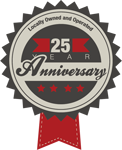Manufacturers: Make Product Information Mobile with Augmented Reality
Guest post by Hervé Lesage, Global Marketing, Xerox Communication Services
Good product information matters on many levels: brand reinforcement, service efficiency, and cost of business. Add customer satisfaction to that list, because it may depend on the customer’s experience with your information.
Your product is your closest touch point to your customer. Poor product information could hinder product use, and erroneous or vague guidelines jeopardize client satisfaction and loyalty. Across the continuum of your business processes, quality of product information determines the quality of deliverables, and ultimately, the quality of customer experience. It’s the “chain of quality.”
Within Reach: Multi-Purpose Information
From design and engineering to prototype development to the assembly line and across logistics and the supply chain, it takes considerable information to deliver and sell a product. CAD drawings, specs, 3D objects and other assets are all created during product life cycles.
If planned well, your core information components can be re-used to build other guides, handbooks and support materials. “Create once, use many” is the mantra of content management, saving time and money. The key is to create pieces to standards and manage them centrally and automatically in some cases.
Deliver Product Information through Augmented Reality
The move to digital information delivery will reveal new efficiencies and productivity, as manufacturers adopt new tools like Augmented Reality (AR). AR has already found its way into product information delivery.
With a smart phone, glasses or headset, the user interacts with the object, as AR precisely overlays computer-generated data on physical objects in real-time. By layering photos, videos, audio or maps onto a real 3D object, AR supports machine-to-human, product-to-human and gear-to-human communications. In a nutshell, AR creates engaging experiences by bridging the physical world with the digital world.
AR delivers on the idea that actions speak louder than words. You physically experience learning and digitally experience using the product, along with gold mines of virtual information. This digital information delivery simplifies the discovery and use of any kind of product, gear or apparatus.
Many Applications for AR in Product Information Delivery
This fast-emerging technology already has use cases across several industries. A Goldman Sachs analysis< explored applications in home improvement, car dealerships, apparel shopping, retail, healthcare and education. In some manufacturing segments, AR may displace traditional CAD/CAM to enhance product demos, show customers how to use products, and reduce repair times for service engineers.
AR improves product information management across the whole sequence of business processes:
- In design and engineering, AR allows real-time modifications, access to catalogues, bi-directional communication, and design iteration management.
- AR equips production and assembly line operators with interactive procedure display, and bi-directional communication and integration with connected objects (IoT).
- To enhance training, AR provides access to catalogues and procedures.
- To drive sales engagement at events, AR offers digital alternatives to traditional booth and show floor demos.
- AR improves service and maintenance operations by letting technicians interact with products, real-time data and up-to-date catalogues, and access to remote expertise and maintenance guides.
AR improves product information management across the whole sequence of business processes:
- In design and engineering, AR allows real-time modifications, access to catalogues, bi-directional communication, and design iteration management.
- AR equips production and assembly line operators with interactive procedure display, and bi-directional communication and integration with connected objects (IoT).
- To enhance training, AR provides access to catalogues and procedures.
- To drive sales engagement at events, AR offers digital alternatives to traditional booth and show floor demos.
- AR improves service and maintenance operations by letting technicians interact with products, real-time data and up-to-date catalogues, and access to remote expertise and maintenance guides.
Augmented Reality Creates Positive Customer Experience
AR has already re-invented customer experience, and this use case illustrates the point in dramatic fashion. The Scan MyDS AR app was developed as a “digital glove box” for DS, a premium French car brand announced by Citroen in 2009.
By simply pointing a smart phone at a car feature, the digital user manual specific to that part displays. The user goes right to the needed information without searching through a printed manual and maybe still not finding current or useful information.
The Scan MyDS AR app delivers significant value through a simple experience:
- Fast access to only relevant information
- Intuitive, user-friendly operation
- Covers 25 models in 25 languages
- Highly rated by thousands of users
Need Help Getting Started in Augmented Reality?
Although this application is specific to auto information, imagine how AR technology might work your organization. Xerox may have some thought starters for you. Xerox combines experience and depth in information management with image recognition innovation from PARC. The outcomes include AR applications like the “digital glovebox” that connect users with information.
Our expertise in product information management extends to:
- Product design information — specifications and CAD models
- Content development — structured content, XML, parts catalogs
- Content management — information architecture, parts databases
- Translation into dozens of languages
- Multichannel content delivery and print production
Please share this page:


